Introduction
In recent times, there has been interest in the utilisation of whole grains to improve bird performance and reduce feed costs. Some previous research on whole grains simply added to a starter diet at graded levels has shown variable results on performance. Some studies have shown improved FCR, lower mortality, plus some carcass improvements and economic advantage. In an effort to develop a good method of feeding whole grains for economic advantage, a trial was conducted in broilers.
Five hundred and twenty straight run day old unsexed broiler (Cobb 500) chicks from Sikhar Hatchery, Chitwan, Nepal were used in the trial. On day 6, 480 chicks were divided into four treatment groups replicated six times each such that each experimental unit consisted of 20 chicks. The birds were reared in deep litter bed made up of rice husk. The feed was manufactured in crumbled form by Probiotech Industries Pvt Limited, Nepal. Feed and water were provided ad libitum. The four dietary treatments were: T1: Starter crumble + grower crumble changing to grower at 16 days of age; T2: starter crumble plus whole wheat; T3: starter crumble plus cracked maize; and T4: starter crumble plus whole bajra (pearl millet). The percentage of whole grain dilution in starter feed is shown in Table 1.
Maize, wheat and bajra with CP 7.6%, 10.9% and 9.8% were used as whole grains.
Treatment birds received whole grains, starting with 5% dilution from day 6, and increasing the quantities every five days to end up with 30% dilution from day 31- 37.
Diet Composition
The birds were harvested after 37 days for carcass evaluation (carcass yield, breast yield, thigh yield, drumstick, gizzard, intestine, back, wings and liver).
Performance
The birds had no difficulty in consuming crumble starter and whole grain mixtures from day 6 onwards without selection and the mixture was seen as homogenous throughout the trial. Average whole grain intake at day 37 was 21% of the total feed intake.
LW at 37 days was considerably poorer in the three whole grain treatments (Table 3). Cracked corn was closest to the control, being some 100g behind. Feed consumption of the whole grain treatments was lower than the control. It is suggested that the lower feed consumption as responsible for the slower growth of the whole grain treatments.
Interestingly, FCR in 2 of the whole grain treatments was equal to the control, at 1.70. This was the maize and bajra treatments.
Lower carcass yield and breast yield were noted in whole grain treated diets except cracked maize (Table 4). Whole grains produced a larger gizzard P<0.01). This represents a more functional gizzard. Gizzard yield was increased by 42.42%, 34.85% and 35.1% with whole wheat, cracked maize and pearl millet respectively. Cracked maize produced smaller intestine (P<0.05) as compared to others. This may represent a more efficient intestine, which would use less energy for maintenance.
Lower performance and carcass yield with whole grain treatments may be due to low amino acids/protein in starter diets.
Economic analysis
Economic analysis favoured cracked maize and whole bajra treatments. Cracked maize and whole bajra generating net profits of NRs. 12.3/ bird and NRs. 6.48/bird respectively (NRs: Nepali Rupees). In terms of net return Whole wheat: NRs. (124.07- 137.47)= loss of NRs. 13.40/bird Cracked maize: NRs. (149.77- 137.47)= gain of NRs. 12.3/bird Whole bajra: NRs. (143.95- 137.47)= gain of NRs. 6.48/bird.
Conclusions
Several researches have been conducted with a feeding program using whole grains, especially whole wheat, barley or maize. They were generally added to starter, grower or finisher diets at certain levels or simply to a starter diets changing the diet specification on a certain interval. These researches have generally shown improved FCR, lower mortality, plus some carcass improvements and economic advantage.
This is the first time whole pearl millet (bajra) has been tested. This trial tested three whole grains viz. whole wheat, cracked maize and pearl millet inclusions in starter crumble (dig. lysine 1.20%) to see the performance and carcass characteristics of broilers. Treatment birds received whole grains, starting with 5% dilution from day 6, and increasing the quantities every five days to end up with 30% dilution from day 31- 37.
Feed intake was significantly reduced in whole grain added diets; the lowest feed intake being noted in whole wheat diet followed by bajra and cracked maize diets. Chickens were able to pick whole grains comfortably from day 6 and there were no wastage of grains in the litter.
All three whole grain treatments had poorer growth as compared with the control. The cracked maize treatment however performed almost equal to that of the control, being 105 grams lighter and with equal FCR (1.70). Carcass parameters were poorer with the whole grain treatments, but again the cracked maize was very similar to the control. Poor performance and carcass yield with whole grain treatments may be due to low amino acids/protein in starter diets.
Economic analysis favoured cracked maize and whole bajra treatments; cracked maize generating net profit of NRs. 12.3/bird and bajra producing a net gain of NRs. 6.48/bird. This trial has demonstrated that it is possible to develop a method of feeding broilers based on use of whole grains. Clearly some further refinements of the program is necessary before we can be confident that whole grain feeding programs will offer performance levels at least equal to a standard crumble/pellet program. Most likely this will require use of a higher nutrient specification starter diet.
Nepal 30% Wheat Dilution on Starter
Nepal Whole Wheat in Gizzard
Crumble Corn
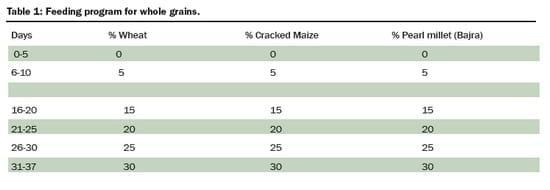
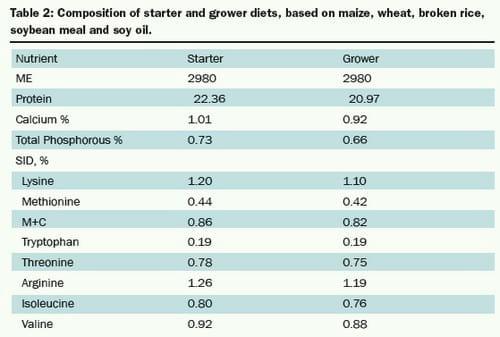
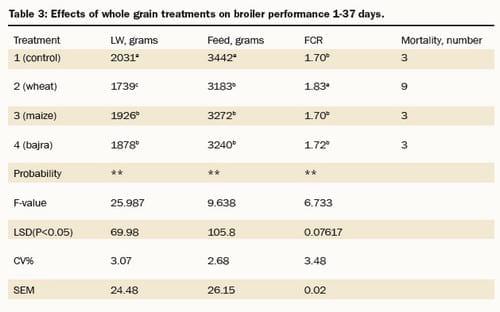
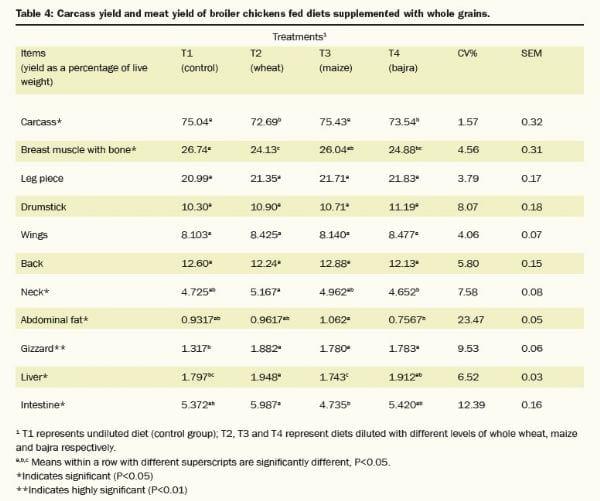
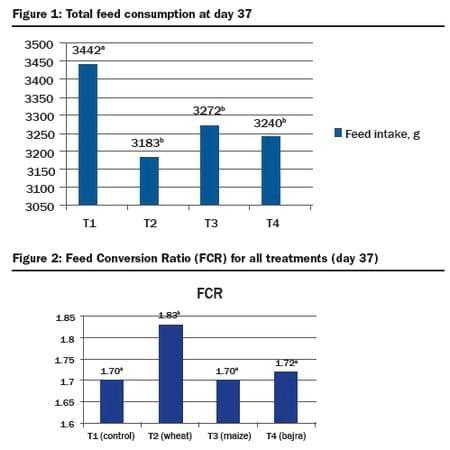

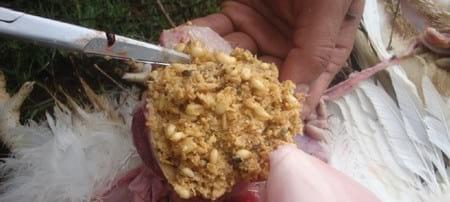






.jpg&w=3840&q=75)








.jpg&w=3840&q=75)